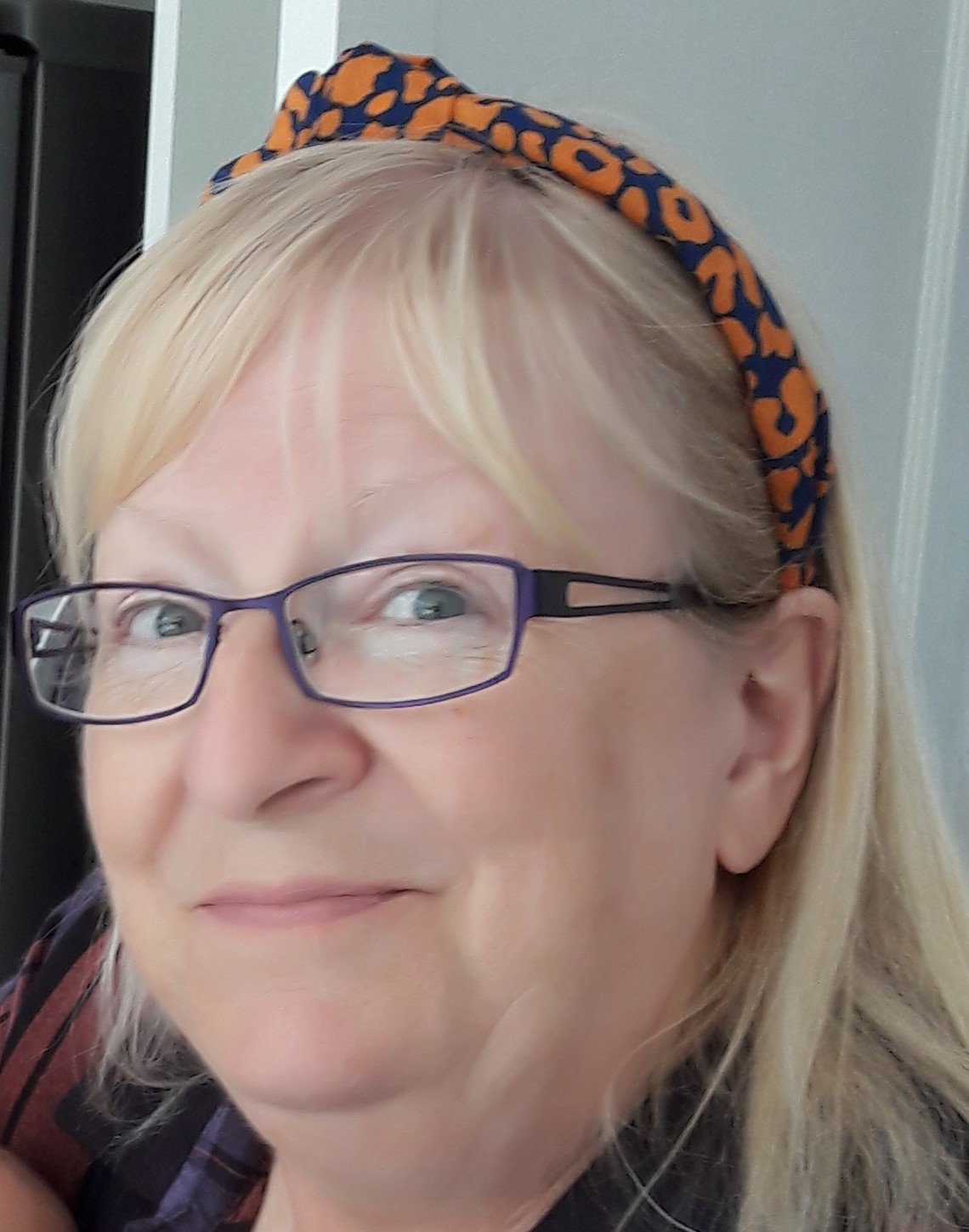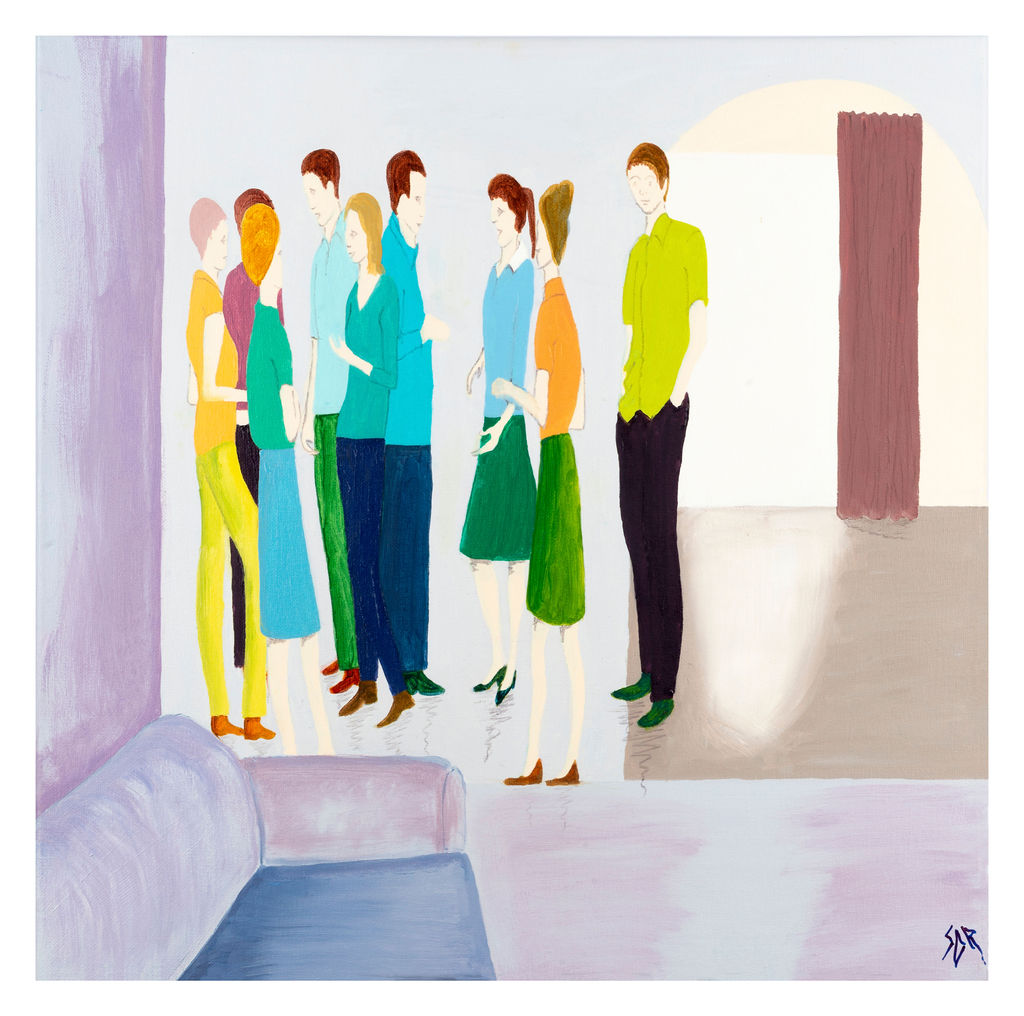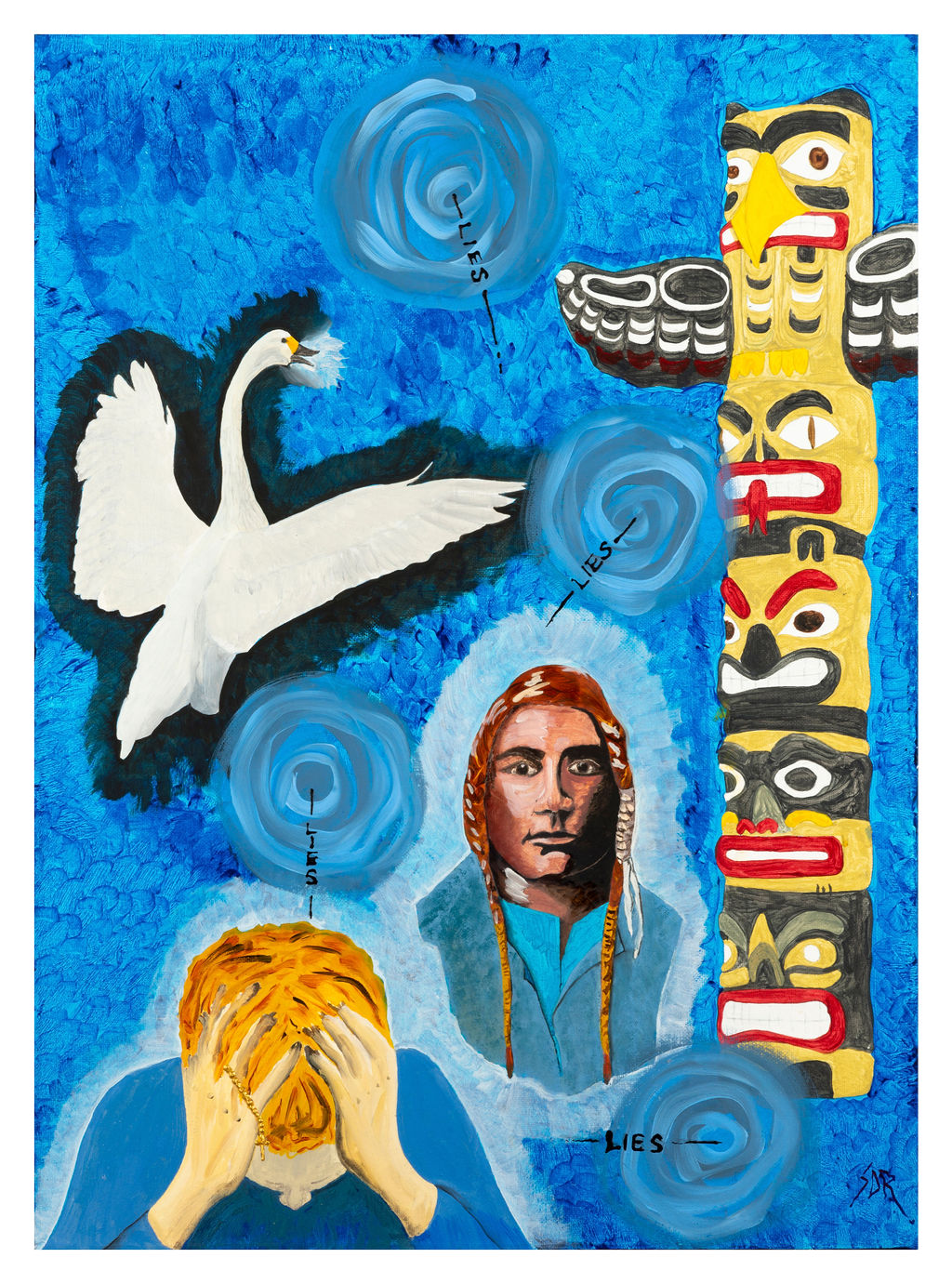Artist
Sarah Dodkin Rush

Sarah Dodkin Rush is an artist and sculptor with Cambridge Open Studios.
Oils, watercolours, acrylic ink, burning and carving wood and paint, working with heated or cold Perspex and photography. Sarah chooses the most appropriate medium for the artwork. She also challenges the concept that sculpture is floor based by creating 3D artworks for the wall. While inspired by nature her fascination with the contrast of the natural world and manmade materials is readily apparent in her work. The dialogue between form and medium develops through experimentation. The final piece is often a surprise.
The Uninvited
Condition: Parkinson’s Disease
Quotes from participant with Parkinson’s
“They normally happen when I’m sitting downstairs on my settee, in the living room, and I normally see several figures to my left. It’s always, it’s nearly always to my left.”
“And they are a certain type of figure, they’re always very, very thin, like stick people” […] Some of them are like, they’re not standing on the ground, they’re kind of hovering and sort of looking down at me. […] Sometimes I have children sitting on the settee next to me. Never touch me. And they never talk to me, that’s the funny thing. And that’s when I thought, ‘Oh maybe, this is hallucinations.’”
“Sometimes they can happen over several, usually in the evening, sometimes in the afternoons, but it’s usually in the evening, and it can be several nights in a row, and then I can go a few nights without anything.”
“I have found that if I say, ‘Go away’, they go away. Not always straight away. […] Well, you know it got to a point that there were a few times that I felt, if they hadn’t had gone away, I would have been very worried. It felt that the whole thing was out of my control. […] so being able to say that helps. And getting a response.”
The first artwork created by working with the Parkinson’s patient comes across as a very calm image. This was inspired by the person themselves, who, having experienced images of people who have passed on in their prior life, was, at first, untroubled by their visits. At first, they were people they knew, so felt secure in their own memories.
Groups of people chatting started to appear but were elongated and raised above the ground as if they were projected from another time or space. They ignored their viewer.
Consequently, as strangers began to appear in stages of undress, children playing next to them on the sofa and males behaving inappropriately, they felt far less comfortable.
Currently shouting at the people to leave, works, as they start to fade away within moments.
Therefore, I painted the very slim chatting people who were standing, above the ground whilst also portraying a single male, who, with direct gaze, at the viewer, was touching himself inappropriately. I decided not to make what he was doing too obvious.
Let Me IN
Condition: Schizophrenia
Quotes from participant with Schizophrenia
“They normally happen when I’m sitting downstairs on my settee, in the living room, and I normally see several figures to my left. It’s always, it’s nearly always to my left.”
“And they are a certain type of figure, they’re always very, very thin, like stick people” […] Some of them are like, they’re not standing on the ground, they’re kind of hovering and sort of looking down at me. […] Sometimes I have children sitting on the settee next to me. Never touch me. And they never talk to me, that’s the funny thing. And that’s when I thought, ‘Oh maybe, this is hallucinations.’”
“Sometimes they can happen over several, usually in the evening, sometimes in the afternoons, but it’s usually in the evening, and it can be several nights in a row, and then I can go a few nights without anything.”
“I have found that if I say, ‘Go away’, they go away. Not always straight away. […] Well, you know it got to a point that there were a few times that I felt, if they hadn’t had gone away, I would have been very worried. It felt that the whole thing was out of my control. […] so being able to say that helps. And getting a response.”
The second artwork was inspired by the moving account given by the patient. It was so obviously hard for them to tell us about their experiences so perhaps I have been a little more obvious in this image by including the lowered head of the patient themselves holding their head in despair whilst clutching a crucifix on a chain to show how their faith helps them.
This person mentioned a kind Indian who guided them and an angry swan. They also mentioned lies being whispered to them which confused them mightily.
The typical totem pole I included is taken from the west coastal Indians of the North American continent. This includes the figures of the Thunderbird, who is said to control the weather and denotes power, mysticism and leadership on a totem pole.
The Bear stands for strength and authority, motherhood, teaching and humility. The strength shown by the patient to even talk to us.
The Wolf is seen as a cunning hunter, also they represent loyalty and family ties. The family ties of the modern family made up of friends and sometimes relatives who are close to you.
The Snake represents change, medicine and fertility. The Snake shedding their skin is like the two sides of the patient. The person and their illness.
The beaver symbolises creativity and determination.
The ability of the patient to carry on.
The two people in the image are outlined in white to represent goodness while the angry swan is outlined in black to indicate aggression. The swirls in the background represents the lies being whispered to the patient.


